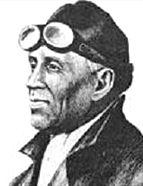

Gago Coutinho held that the 1928 Imprensa Nacional edition of Os Lusíadas organised by José Maria Rodrigues and Afonso Lopes Vieira contained a geographical map that was nothing more than a copy of the map in Diogo Kopke’s Roteiro de Vasco da Gama, which wrongly suggested that Camões had sailed round Africa on a route that took him close to São Tomé Island; that Kopke, who was a literary expert on Camões, had deduced from reading it that there were two different but interlinked routes; and that this deduction was based on interpretations of nautical language, such as the terms “to pass”, “in sight”, ”to round”, or “to go around”, which were erroneous because they were made by someone who was not familiar with sailing. The ensuing large-scale controversy, which fuelled a number of publications, led Gago Coutinho to accuse the researcher of misusing and misinterpreting the sources consulted by Camões and making omissions and attenuations. He advised reading the English edition of da Gama’s journal by Ernest George Ravenstein, which was published in 1898 by the Hakluyt Society and enjoyed the collaboration of Admiral Markham. He completely rejected the idea of a dual track, or the outspread of the track, which Rodrigues argued for. He said that the latter ignored the winds and tides. According to Gago Coutinho, Rodrigues’ lack of nautical knowledge led him to base himself on grounds that were more literary than technical, and that it was not possible “to reach any conclusion other than that Gama followed a double-curved track” (O Roteiro da viagem de Vasco da Gama e a sua versão nos Lusíadas, 1930, p. 41); but that Rodrigues preferred to say that Camões had falsified the route “in order to lend more variety and animation to the news about African coasts and islands”, dividing the stops referred to in Os Lusíadas between the two routes he had taken. The dispute raged from 1929 to 1934, with Gago Coutinho using arguments based on geographic principles while José Maria Rodrigues employed those of a literary nature.
During this period Gago Coutinho was to publish various other studies: Desdobramento da derrota de Vasco da Gama nos Lusíadas (A breakdown of Vasco da Gama’s track in Os Lusíadas, 1931); and Possibilidade da rota única de Vasco da Gama em Os Lusíadas. Impossibilidade de Vasco da Gama ter navegado de Cabo Verde para o Sul (The possibility that Vasco da Gama took a single route in Os Lusíadas. The impossibility that Vasco da Gama sailed southwards from Cape Verde, 1931); A possibilidade de se ler pela segunda vez em Os Lusíadas, uma rota única de Vasco da Gama (The possibility of reading for the second time in Os Lusíadas that Vasco da Gama took a single route, 1933); Continuação dos erros em que se apoiou o desdobramento da rota de Vasco da Gama em Os Lusíadas (Continuation of the errors used as a basis for the taking of a dual route by Vasco da Gama in Os Lusíadas, 1934); Apreciação crítica da viagem de Vasco da Gama (Critical appreciation of Vasco da Gama’s voyage, 1945); and Discussão sobre a rota seguida por Vasco da Gama entre Santiago e S. Brás (Discussion on the route Vasco da Gama followed between Santiago and São Brás, 1949), which he presented to the Portuguese Academy of History (APH).
